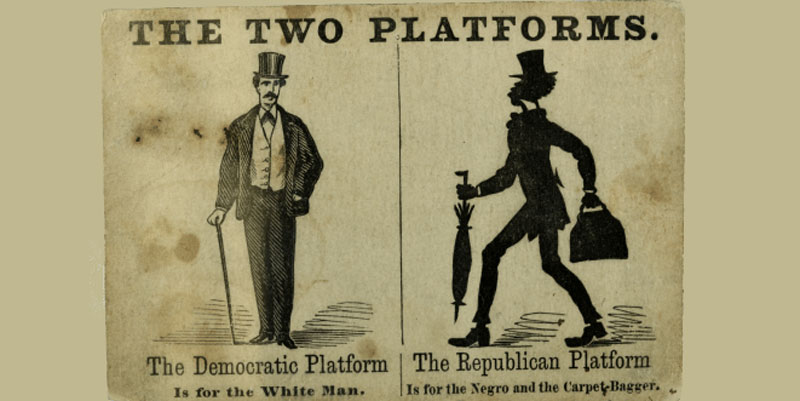Ray Rickman for RI Senate (9-13-21) from John Carlevale on Vimeo.
Ray Rickman and host Mike Stenhouse talk briefly about Rickman’s extensive public service background and a variety of topics relating his practical, pragmatic and realistic plans as an elected official. Rickman’s major goal is to improve education in Providence public schools with reasonable and achievable changes rather than lofty transformative reforms, which rarely achieve their promised results.
[Open full post]GoLocalProv is reporting that Providence Mayor Jorge Elorza won’t be following through with his plan to seek the governor’s office. It’s the obvious move to make, given the state of political play in the state right now. I suppose it would be too much to hope, however, that Elorza has realized he’s out of his depth already and the governor’s office would only be more so. It boggles my mind that some of these people even want to go down this path.
[Open full post]At least the Northeast isn’t completely gone. Particularly encouraging, here, is how deeply the lawsuit is framed in terms of our complete loss of rights under perpetual “emergency” declarations.
[Open full post]Departing Democrat Governor Dan McKee’s administration under the cloud of an influence peddling scandal, former Chief of Staff Anthony Silva is taking with him a $53,000 payout for unused time off, according to Eli Sherman on WPRI.
This benefit is always an issue when government employees leave office for some controversial reason, and the public is told again and again that it’s simply part of the law. Moreover, $53,000 is a lot of money for somebody to waive away on principle.
These payouts have driven me most crazy when municipal employees who’ve literally been caught stealing time are permitted to part gracefully into their retirements. They are pushed out because they were getting paid while not working, and then they turn around and collect money for paid-time-off benefits they could have used instead of stealing.
Silva’s case is a little different. One does wonder whether the reason he’s accrued so much unused time off (like over a month of vacation time) is that his job really wasn’t that challenging to begin with — not necessarily “no show,” but something more like “can’t tell the difference if he shows.” This suggests a question: Did he not take this time off because he never went anywhere, or was his job such that he just never had to log vacations and illnesses?
It would be very reasonable to tell highly paid office workers that time off is use it or lose it each year. They’ll point to the provisions given those lower down the hierarchy, like frontline workers, but with them at least one can understand that there’s some benefit for the taxpayer that such employees don’t have to worry about losing their compensation if circumstances require them to work through vacations or illness.
In some ways, the scandal with this benefit starts with the news media, which likes to grab easy headlines, but they’ll ignore (or even bring extra heat on) anybody who tries to address such practices. Were some reformer to win office and go after the public sector’s crazy perks, would journalists run stories reminding the public of the many scandals, or would they pull heart strings on behalf of the union employees?
Speculation aside, if these headlines offend you, don’t get in a huff about the controversy and then go on with your life. Change the way you vote. Volunteer to help courageous candidates.
Featured image by Ivan Vladimirov on WikiArt.
[Open full post]This is surreal and shocking:
Add it to the sense that public health experts, right down to people’s doctors (anecdotally) seem to be following political winds in their advice related to COVID-19, and it sure feels like our society is drifting in a stormy sea. The people in roles meant to safeguard our democracy are proving that their support for the principle is contingent on their getting their own way on the important things.
[Open full post]Owing to the fact that a local union official and I have the same name, I’ve been peripherally following a controversy in Boca Raton, Florida, involving an unnamed teacher who was suspended for showing his high school history class Civil War–era political imagery, including the one used as the featured image for this post. These lessons are so clearly on the educational side of the divide, it’s shocking that they’re even an issue. Boca News Now has sample images and text from the class, as well as the transcript of a ridiculously simple-minded robocall the district sent to parents:
Your child’s teacher included a political illustration from the 1800s as part of instruction. That illustration contained a derogatory slur. Although the teacher was sharing an example of past political commentary, any type of racial slur, no matter the context, is not acceptable in the District’s educational setting.
We have to be careful what sort of children we’re raising. If by high school teenagers aren’t emotionally capable of putting historically common words in their context, their schools and parents are failing them egregiously. Indeed, an 1861 Chicago Tribune news clipping that the teacher juxtaposed with one from a Southern paper seems poignantly relevant to our times, although the geographies have arguably switched:
The North is prosperous and the South is not. The one increases and multiplies by a process which freedom and civilization constantly accelerates. The South goes far backward by a process which ignorance and slavery inaugurate. The wealth, the power, the intelligence, the religion and advanced civilization are with the first. The last is secondary and retrograde. It is the infirmity of semi-barbarous men to hate what they cannot imitate; hence the bitterness which marks the utterances and emphasizes the actions of the rebels. Dislike of what is above and beyond them is at the bottom of this.
If the geographic divide has (at least) muddied, I’d argue that the parties have not. Look closely at the featured image of the post. Big tents lead to diverse populations, of course, but in general, the party that appealed to racists then is the party that appeals to racists now, although they’re much cleverer about disguising it.
One wonders how much suppressing Democrats’ evil history motivated this suspension.
[Open full post]Free-market purists err in that they disregard (or, at least, discount) the importance of factors that both they and the market have a hard time factoring into their equations. Even relatively unadulterated free-marketers recognize the problem of externalities and the tragedy of the commons. We should arguably go a little farther than that and recognize that a community may want to do something for completely non-economic reasons (like morality) and that has a real economic cost.
Even in that case, though, decision-makers have to acknowledge that the free-market calculations help them understand what the cost really is.
Looking at the Pay Equity Act in Canada (of which, Rhode Island unfortunately has a version), Isaac Teo gives a good explanation of how this principle relates to the idea of forcing companies to prove that they pay men and women equivalently. Economist Matthew Lau points out that, even at the most basic level, this creates disincentive to hire women. If you’ve got women in your workforce, you face a constant need to prove you’re not paying them less. That’s a cost with no offsetting benefit, which means that the policy creates pressure not to hire women.
For the classic explanation of this sort of policy, however, Teo turns to Milton Friedman:
Friedman responded that “the actual effect of requiring pay for equal work will be to harm women.”
He explained that “if women’s skills are higher than men’s in a particular job or are recognized to be higher, the law does no good, because then they will be able to compete away [anyway] and can get the same income.”
And “if their skills are less for whatever reason … and you say the only way you are able to hire them is by paying the same wage, then you are denying them the only weapon they have to fight with,” he said, referring to the weapon of competition.
Such laws also make it easier and cheaper for employers who are sexist to discriminate against women, Friedman added.
“If you say to them, you have to pay the same wage no matter whether you hire women or men, and here is Mr. sexist pig—it doesn’t cost him anything to hire men instead of women,” he said, noting that what you actually want is “to make it costly to him to exercise his prejudice.”
“When you try to get equal-pay-for-equal-work laws, what you are doing is reducing to zero the cost imposed on people who are discriminating for irrelevant reasons,” said Friedman.
That last point is worth unpacking a bit. If Mr. Sexist Businessman refuses to hire women, then his competitor can hire women who are as talented as the sexist’s male employees, but at a lower price, because that’s the market rate. This gives the non-sexist a competitive advantage, and the sexist will go out of business or find he has no choice but to hire women (or give the company’s board a reason to get rid of the sexist executive). If the government forces the non-sexist company to pay women the same as men, then there’s no competitive advantage to hiring women, and women have no tool to make themselves more attractive as employees.
The fundamental question, then, is whether the idea that an employer can pay women less is so abhorrent that it’s worth making women’s professional position worse, on average, in order to forbid it. That’s a tough case to make.
Featured image by Kraken Images on Unsplash.
[Open full post]Writing for Accuracy in Media, I note how similarly NowThis (an online video news source with deep Democrat ties) frames its climate-change alarmism to Biden’s vaccine mandate language on the same day:
What makes this different from the typical cynical exploitation of disaster by climate alarmists is that NowThis released its video on the very same day Biden announced his vaccine mandate. According to his announcement, mandates are necessary “to combat those blocking public health.” Vaccine refusal “has cost all of us.”
The same elements are present in both cases, insisting that the government must take action to protect Americans from bad actors whose behavior threatens public health and the economy. Biden says: “The evidence is clear. Climate change poses an existential threat to our lives, to our economy.” Meanwhile, he’s insisting his COVID plan “protects our economy and will make our kids safer.”
This is a very important point to keep in mind as Americans come to conclusions about government’s response to COVID-19: Whatever you tolerate in order to battle back COVID, you’ll certainly find the powerful pressing further in the future, often in ways you don’t anticipate.
The issue is never really the issue. Power is the issue. The progression that progressives pursue plugs topics into the machine, whether the pandemic, the climate, racial discord, or tax policy. As different as the issues may be, your relationship with government is the common theme.
Featured image by Luca Signorelli on Wikipedia.
[Open full post]Periodically, I’ll come across a headline from Dr. Andrew Bostom, who has been a prominent contrary voice in Rhode Island going after the diktats of the public health establishment. We’re on the same side, generally, and I often agree with his overarching points, but every time I look into his arguments, I find he’s seems to be misrepresenting something. So, for example:
… July, 2021 SARS-CoV-2 (covid-19) infection data collected by the Rhode Island Department of Health, with presentation of the findings by both vaccination, and prior infection status, provide independent validation of these NNT/NNH results (4,5). While 30% of these total (n=2127) new SARS-CoV-2 infections occurred among persons fully covid-19 vaccinated (639/2127), only 3.4% of those with a prior infection, regardless of vaccination status, were infected in July (73/2127). Fully vaccinating those with a prior covid-19 infection did not lower this percentage at all (22/639=3.4% fully vaccinated; 51/1488=3.4% not fully vaccinated).
These statements do not accurately reflect the numbers he presents. It is not true that “3.4% of those with a prior infection, regardless of vaccination status, were infected in July” because his denominator is wrong. 2,127 is not the number of people with prior infection, but the number of people infected in July total. Likewise, as far as I can tell, the fact that his ratios produce 3.4% for both the vaccinated and unvaccinated is an entirely meaningless coincidence. All it means is that 3.4% of vaccinated people who were infected in July had previously been infected, and 3.4% of unvaccinated people who were infected in July had previously been infected. This might be interesting but for the fact that breaking people up by vaccination, on one hand, and previous infection, on the other, does not produce equally sized groups.
That said, in making this error, Bostom dramatically understates the protection that previous infection provides. I’d need more-detailed data to fine tune this, but roughly speaking, only 0.048% of all people who had been infected with COVID-19 by the beginning of the month caught COVID again in July. This compares with 0.108% of all people who had been vaccinated, which is in keeping with various findings recently reported that natural immunity is better than vaccinated immunity.*
It’s important to note, however, that vaccination improves outcomes across the board. Very roughly, these numbers suggest that being vaccinated cuts your risk in about half whether you’ve had COVID before or not. Unvaccinated people who caught COVID for the first time in July were 0.16% of all people who had not yet caught it, while vaccinated COVID-virgins were 0.07%. Looking at those who had already had COVID and caught it again in July, the percentages are 0.034% unvaccinated and 0.014%.
The effect gets more pronounced when you look at people in the hospital. Of all people who had not yet been infected with COVID, 0.007% were not vaccinated and wound up in the hospital with COVID in July. The percentage for those who had been vaccinated was 0.002%, so less than a third. Of all people who had previously been infected, the percentages are 0.008% and 0.001%. So, again, vaccination improves outcomes.
This holds true if we change the denominator to people who caught COVID in July. Based on these numbers, being vaccinated makes it much less likely you’ll end up in the hospital if you do catch COVID, whether or not you’ve had it before. Of particular note, almost one out of every four unvaccinated people who had already had COVID and caught it again in July was hospitalized. If they’d been vaccinated, it was less than one in 10. In short, no matter your situation, being vaccinated makes it less likely you’ll test positive for COVID, and if you do test positive, it makes it less likely you’ll find yourself in the hospital.**
Finally, turning to the worst outcome, we find that only six people died while testing positive for COVID in July, and they were all unvaccinated people who had not had COVID before and were over 30.
While making decisions about your own health, though, remember that these numbers remain small. If you’ve had COVID before, if you’ve been vaccinated, or if you’re young, the possibility that you’ll have a severe experience with COVID in any given month are miniscule. (And, frankly, the odds are small for most people anyway.) This is why at the very least, any government, employer, or other organization considering a vaccine mandate should also allow proof of natural immunity, and also why we should be leaving young children alone.
Bostom’s point does remain valid, though, that the vaccines have risks, which should make mandates even less acceptable. However, I’m not confident that his specific numbers are truly relevant to the decision for three reasons.
First, I can’t confirm his numbers from the study that he cites for vaccine risks, although it’s definitely possible I’m simply missing something. He claims that “the proportion reporting one moderate to severe symptom was higher in the previous SARS-CoV-2 infected group (56% v 47%),” but these numbers aren’t anywhere I can find, so it’s not clear what they really signify. (Indeed, it’s hard to see how they can reconcile with the percentages shown in Figure I.)
Second, his calculation of the number needed to treat people with the vaccine is based on any positive test, which isn’t really the number we should care about. We know going into vaccination that there might be some side effect. The question is how well it protects against outcomes from the virus that are worse.
And third, his mixing and matching of studies to measure the benefits of vaccines against the harms comes with complications. The study of vaccine side effects, for example, comes from the United Kingdom and specifically states that the mRNA vaccines (Pfizer and Moderna) produced more side effects, but fewer serious side effects than the alternatives. This is relevant to the study out of Israel because nearly everybody there received mRNA.
* A key number we don’t have is how many people were both vaccinated and previously infected. If people who had been previously infected were much more likely to be vaccinated, too, then these numbers would equalize. Intuitively, that seems unlikely, but it does possibly have some effect.
** Important reminder: These numbers are for people who test positive while in the hospital, whether or not they’re there because of COVID. It’s possible, therefore, some other variable (like obesity) is playing a role.
[Open full post]The story of Ray DeMonia is floating around social media. The short version is that the Alabama man had a heart attack, but it took so long for his family to find a hospital with a cardiac ICU bed (because they were all occupied by people who hadn’t gotten the COVID vaccine) that he died.
An NPR story clarifies that this was the explanation his family wrote into his obituary. What’s remarkable is that this was left to the very end of a relatively long news article:
A Cullman Regional Medical Center spokesperson, who declined to give specifics of DeMonia’s case citing privacy concerns, confirmed to NPR that DeMonia was transferred from CRMC, but said the reason was that he required “a higher level of specialized care not available” at the hospital.
Wait for facts, folks. The lost credibility of public health officials and vax advocates is hurting the cause of vaccination.
[Open full post]







